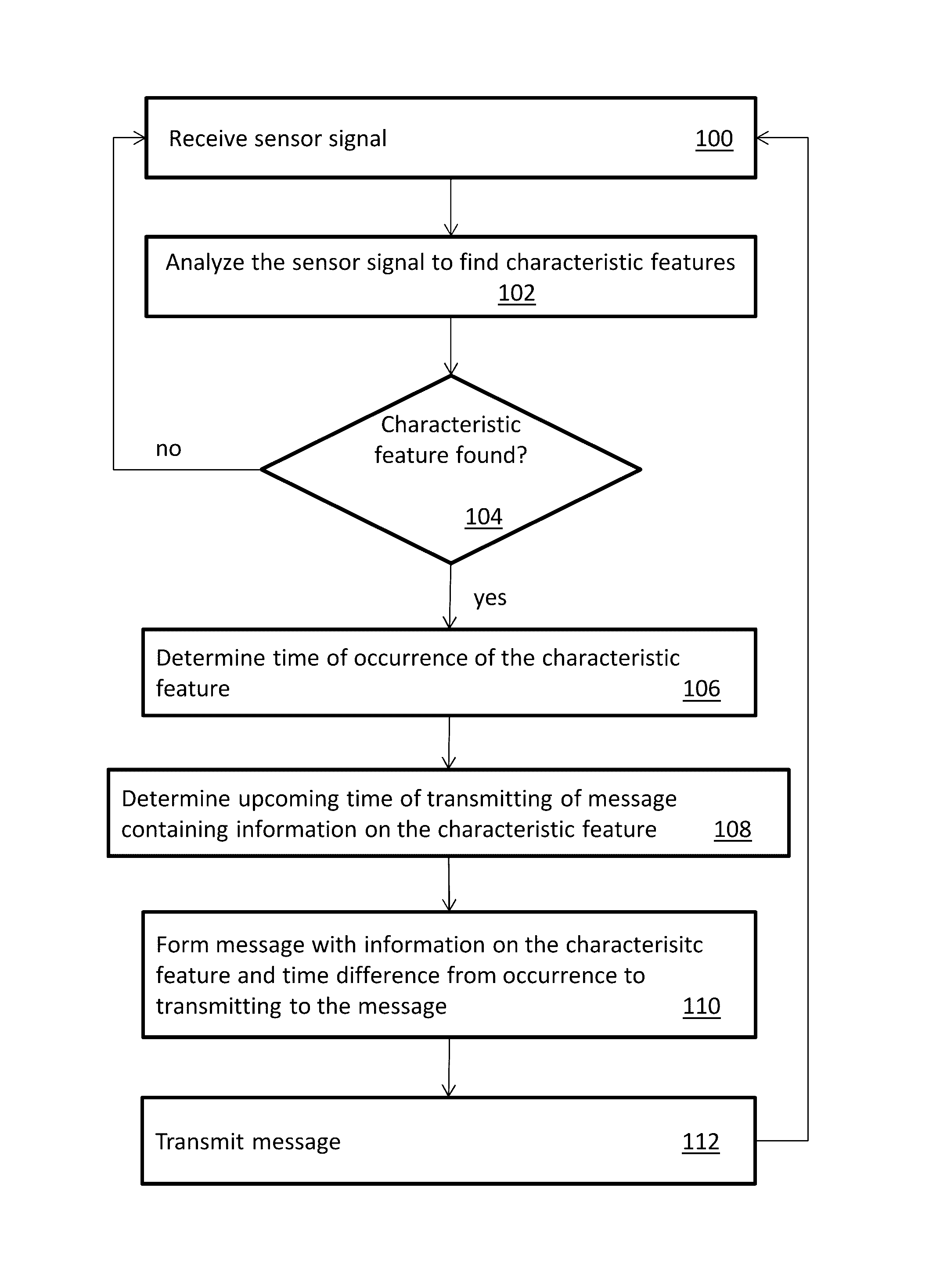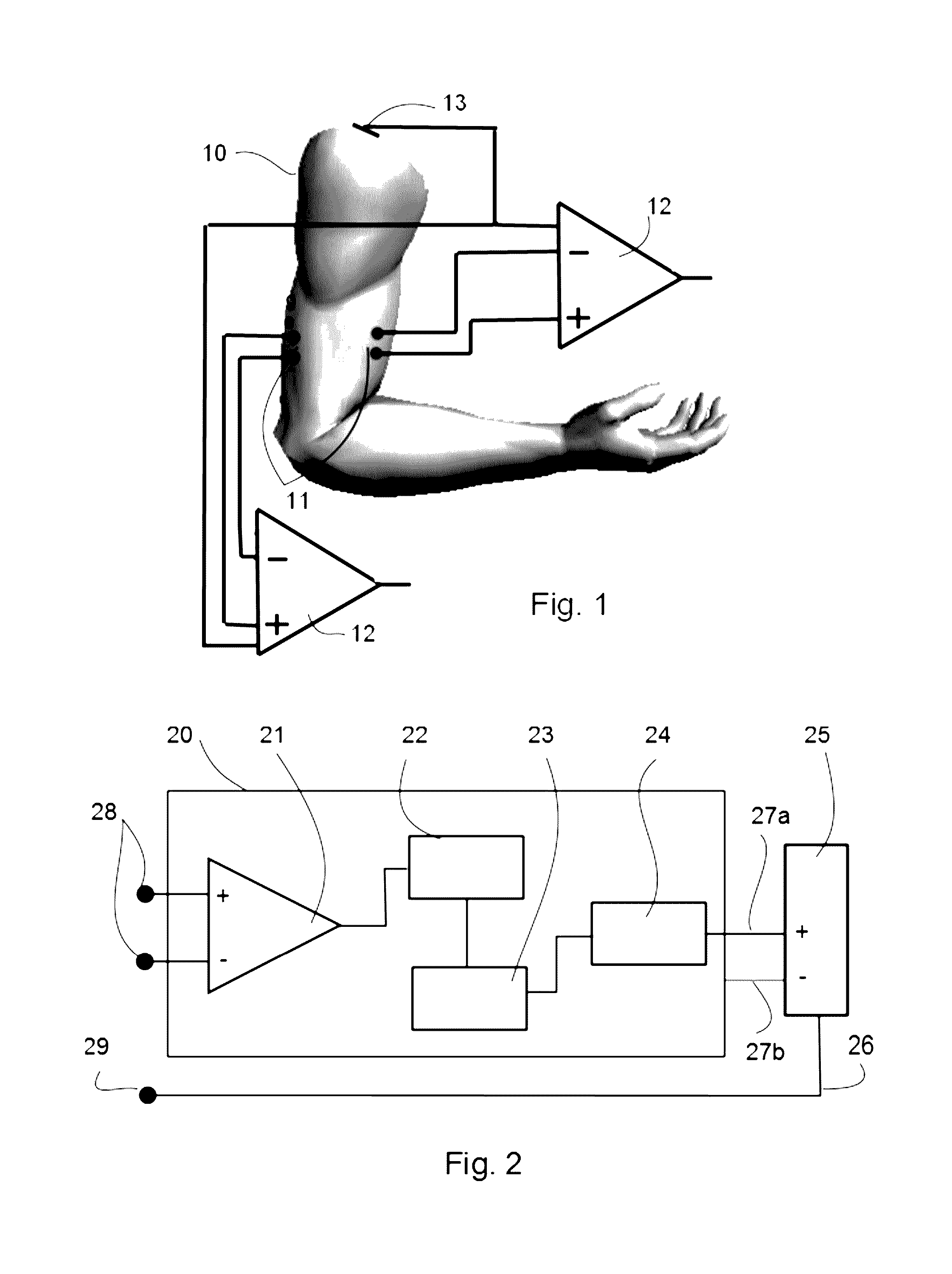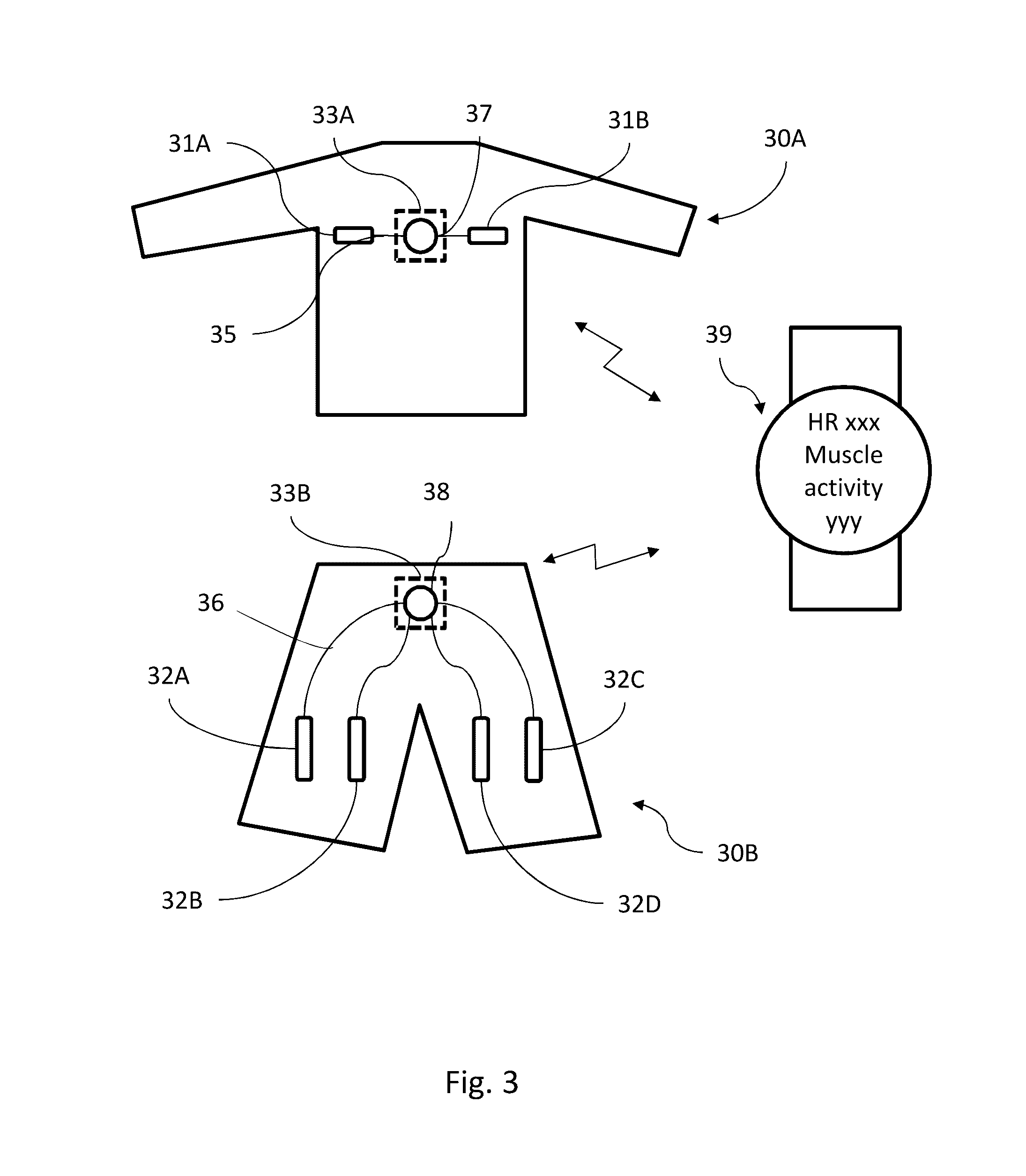Arrangement, a communication module, a sensor unit and a method for monitoring physical performance
a communication module and sensor unit technology, applied in the field of communication arrangements, can solve the problems of system inability to synchronize events from different detector sources, system becomes impractical, and system flexibility is restricted
- Summary
- Abstract
- Description
- Claims
- Application Information
AI Technical Summary
Benefits of technology
Problems solved by technology
Method used
Image
Examples
Embodiment Construction
[0105]In FIG. 1 is shown the general principle of how EMG electrodes 11 are attached to a human body 10. The electrodes are often placed in pairs on opposite sides of the body or body part, in order to measure the activity of both agonist and antagonist muscles, here the biceps and triceps muscles of the human arm. In especially important to monitor differences in actions of symmetric muscles on various sides of the body and limbs. Muscles of the weaker side may be developed in order to improve the sport performance or to return the normal efficiency after an injury. The trainee gets immediately response of the balance and the change in balance of actions of muscles, by means of which the trainee may control and improve the efficiency of the physical exercise and prevent the weakening of efficiency due to unilateral fatigue of muscles. Such information is measured, processed, analyzed and indicated by the inventive method and system.
[0106]The weak EMG signals in the microvolt range ...
PUM
 Login to View More
Login to View More Abstract
Description
Claims
Application Information
 Login to View More
Login to View More - R&D
- Intellectual Property
- Life Sciences
- Materials
- Tech Scout
- Unparalleled Data Quality
- Higher Quality Content
- 60% Fewer Hallucinations
Browse by: Latest US Patents, China's latest patents, Technical Efficacy Thesaurus, Application Domain, Technology Topic, Popular Technical Reports.
© 2025 PatSnap. All rights reserved.Legal|Privacy policy|Modern Slavery Act Transparency Statement|Sitemap|About US| Contact US: help@patsnap.com



